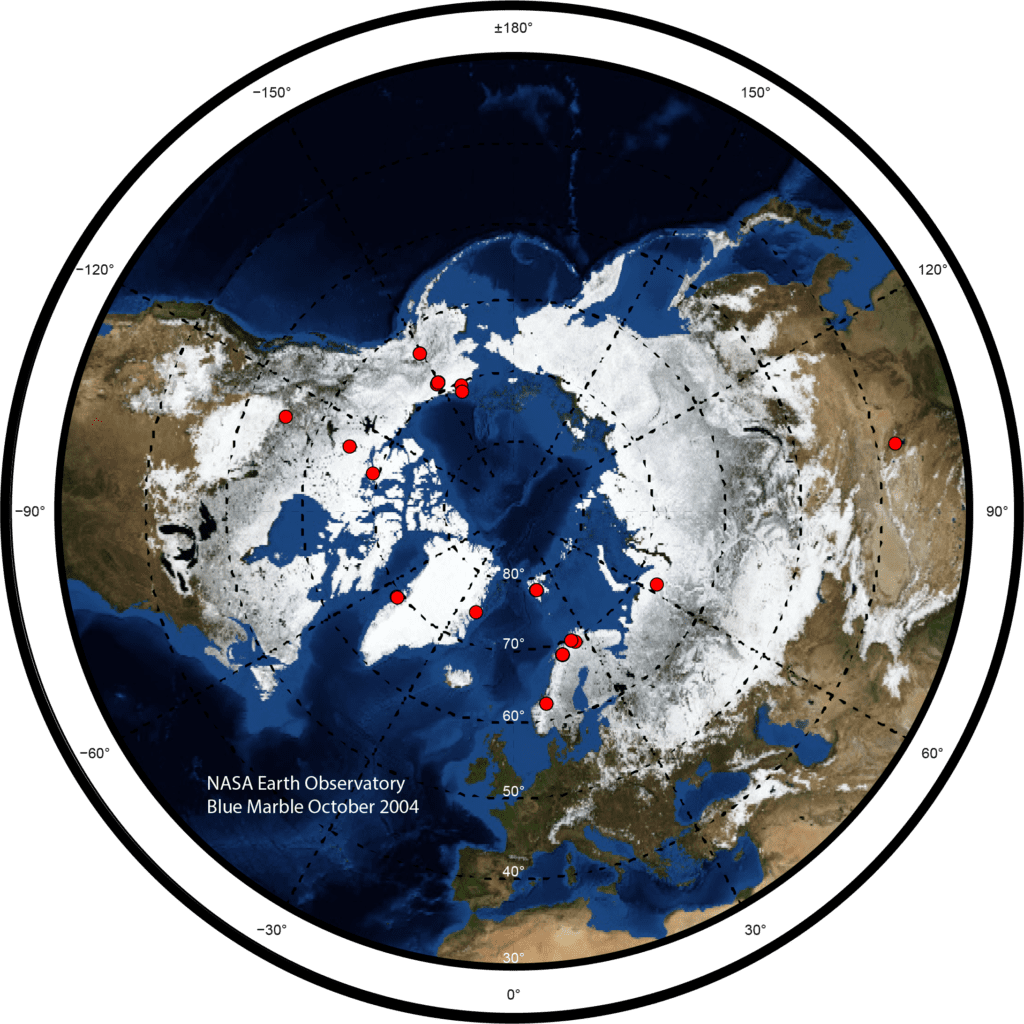WrPMIP Site Simulations (Phase 2)
| Phase | Experiment | Input | Historical 1901-2021 |
Future 2021-2100 |
Extended 2100-2300 |
|---|---|---|---|---|---|
| 2 | Site-level Baseline | Climate, CO2 | Bias-corrected CRUJRA | Not simulated | Not simulated |
| Site-level OTC Warming | Climate, CO2 | Bias-corrected CRUJRA | Not simulated | Not simulated | |
| Site-level Snow Fence Warming | Climate, CO2 | Bias-corrected CRUJRA | Not simulated | Not simulated | |
| Site-level Snow Fence Warming w/ Snow Removal | Climate, CO2 | Bias-corrected CRUJRA | Not simulated | Not simulated |

Site-level Simulations (Phase 2)
We will follow the general approach of the regional simulations with a few changes:
- We have selected 14 grid cells of interest where warming experiments occurred and climate data exists to bias-correct the CRUJRA product for these sites.
- We will spin up these sites similar to regional runs with the 1901-1920 bias-corrected climate, run the simulation until 1980 (before the earliest experimental warming), and then restart a baseline, OTC, and SF simulation.
- In the warming restarts, each cell will begin warming based on onset of warming (given in the provided NetCDFs; OTC and SF warming start at different times for several sites). In CLM5 we accomplished this by adding an if statement that checked the current simulation year in comparison to the onset of warming to turn on the regional warming code changes in each grid individually. Warming was then run until the end of 2021 for simplicity. The onset of warming info was added to the surface dataset for CLM but could be ingested in other ways based on each models code structure.
- The key differences here are the bias-corrected climate and changes to the surface data describing the sites. We are aiming at representing tundra underlain by permafrost and suspect models in their current states will not easily capture expected ecosystem states/responses. Each model will have to make decisions where we cannot harmonize model setup (e.g. the most representative PFT, surface data, etc.). Please keep track of what information was used.
- Outputs for the 1901-1980 transient simulation can similarly be monthly, while the baseline/OTC/SF restarts should be in daily outputs. Due to the small size of these simulations daily outputs for everything is also acceptable.
At the end of this phase we can experiment with parameterization to better replicate baseline conditions at the site before simulating warming. Further model simulations could also be planned to address key permafrost-focused science questions like: ground ice, rapid thaw vs decadal changes, etc.
